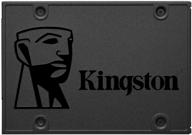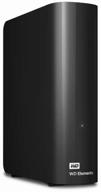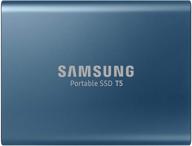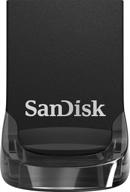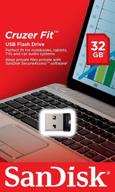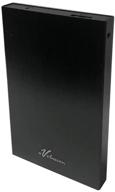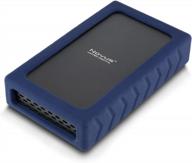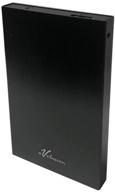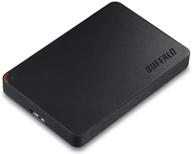- A fantastic flash drive for dealing with files of up to one or two gigabytes in size. You will be need to hunt for alternatives that have a comparable write speed for little files, and it is quite likely that these alternatives will be substantially more expensive (higher capacity). If the first gigabyte was recorded at 90 and the second gigabyte was recorded at 20, then the average speed for non-small files is 55 MB/s; there are also few alternatives for comparable prices, and they will undoubtedly be greater in size. You only need to register it on SanDisk's website to take advantage of the excellent warranty that the company provides (I had previous experience with another flash drive).
- This flash drive is still quite good as long as you don't need to write more than two gigabytes at a time onto it (which should be the case in most situations). It becomes good, then normal, and after that "you can find better" (for 4 GB, the speed will be (90 20 20 20) / 4 = 37.5 MB / s, etc.). This is because as the volume of information recorded during a single session increases, the quality of the recording improves. My experience is that the speed varies depending on the operating system and the USB version used (3.0 or 3.1). The read speed of my copy does not reach 135 MB/s even when using USB 3.1 and Windows 10, despite the fact that 150 is indicated on the packaging.
- The reading speed is consistent with what was advertised, and there has been much consideration put into the design of the heat sink.
- Instead of bonding the case together, it turned out to be quite flimsy.
- Compact size, usb3.0
- The write speed, the temperature, and the reliability. The level fluctuates on a regular basis. When the device is hooked up to the Pioneer radio in the automobile, an error message that states there is no available USB media will occasionally appear.
- Size (physical) (physical)
- Unrecoverable write protection could be triggered by heat Does not function with a PCI expansion card's USB 3.0 extension.
- Price/volume/speed. Metal body foundation for USB 3. The dimensions are short and thin. Stylish.
- That should be 32022000000/1024/1024/1024 = 29.80 GB, however it is only 28.60 GB. 800 MB were lost. warm sensation when recording. Much reduced writing speed (probably from heating). It begins writing a complete file at 90 Mb/s, but after around 1 Gb, it abruptly drops to 20 Mb/s. Reading speed is decreased as well, but just slightly, from 130 to 90-100 Mb/s.
- Large file reading speeds can be anywhere from 70 MB/s to 160 MB/s. It's still functional after only light use for a few months.
- Large file reading speeds begin at around 150–160 MB/s but decline to around 70 MB/s after a few seconds (after reading around 3–4 GB). From 1-2 MB/s (and even less) to 50-60 MB/s, the rate at which small files are read varies wildly. The initial write speed is approximately 60 MB/s, or slightly higher; however, after recording approximately 2 GB, the write speed decreases to approximately 30–40 MB/s, and after recording an additional 2 GB, the write speed decreases to approximately 20 MB/s. While I don't find the lack of a cap to be particularly frightening, it is preferable that there be one.
- affordable 64 GB USB 3.0 flash drive with lightning-fast read speeds
- The prose moves at a leisurely pace. (About as good as USB 2.0 can get)
- Great USB drive for documents up to 2 GB in size. You'll have to shop around for alternatives that offer a comparable write speed for little files, and they'll probably be quite pricey (higher capacity). A non-small file's average speed is 55 MB/s if the first gigabyte is recorded at 90 and the second at 20; there are few alternatives for the same price, and they will almost likely be larger in size. I can attest to the quality of SanDisk's warranty by saying that I've used another flash drive with which it was on par.
- If you rarely need to write more than 2 GB at once, this flash drive is still great. By increasing one-time data recording capacity, the speed improves to good, then normal, and finally "you can find better" (for 4 GB, the speed will be (90 + 20 + 20) / 4 = 37.5 MB / s, etc.). It seems to me that OS and USB version make a big difference in transfer rates (3.0 or 3.1). My copy's read speed tops out at 135 MB/s even when using USB 3.1 and Windows 10, despite the package claiming 150.
- recording speed under 90 Mb/s with copy volume AT ONCE up to 1 GB (then drops to 10-12). Large files are consistently read at a rate of 110–130 Mb/s. Reliability. Previous to that, I purchased three flash drives in a row through the online store from different manufacturers; two of them "dead" within a day, and the third one did so after a week (this is not usual, is it?). This person has been working continuously for more than a year without receiving the tiniest critique, producing several GB of writing, reading, and overwriting practically every day.
- It writes only a little bit more than 1 Gb of data when writing a lot of data at a respectable speed (70-90 Mb/s), and then the speed reduces to 10-12 Mb/s (2-3 times slower than my other USB-3 flash drive). The flash drive has to "rest" for at least a few minutes in order to regain its high write speed. Such a recording speed is just a disgrace for 32 GB of capacity (a full flash drive takes almost an hour even when copying large files of 1-5 GB). According to the reviews, EVERYONE DOES IT, yet the maker does not mention this feature for some reason. Or does it completely combine all examples of the model?







